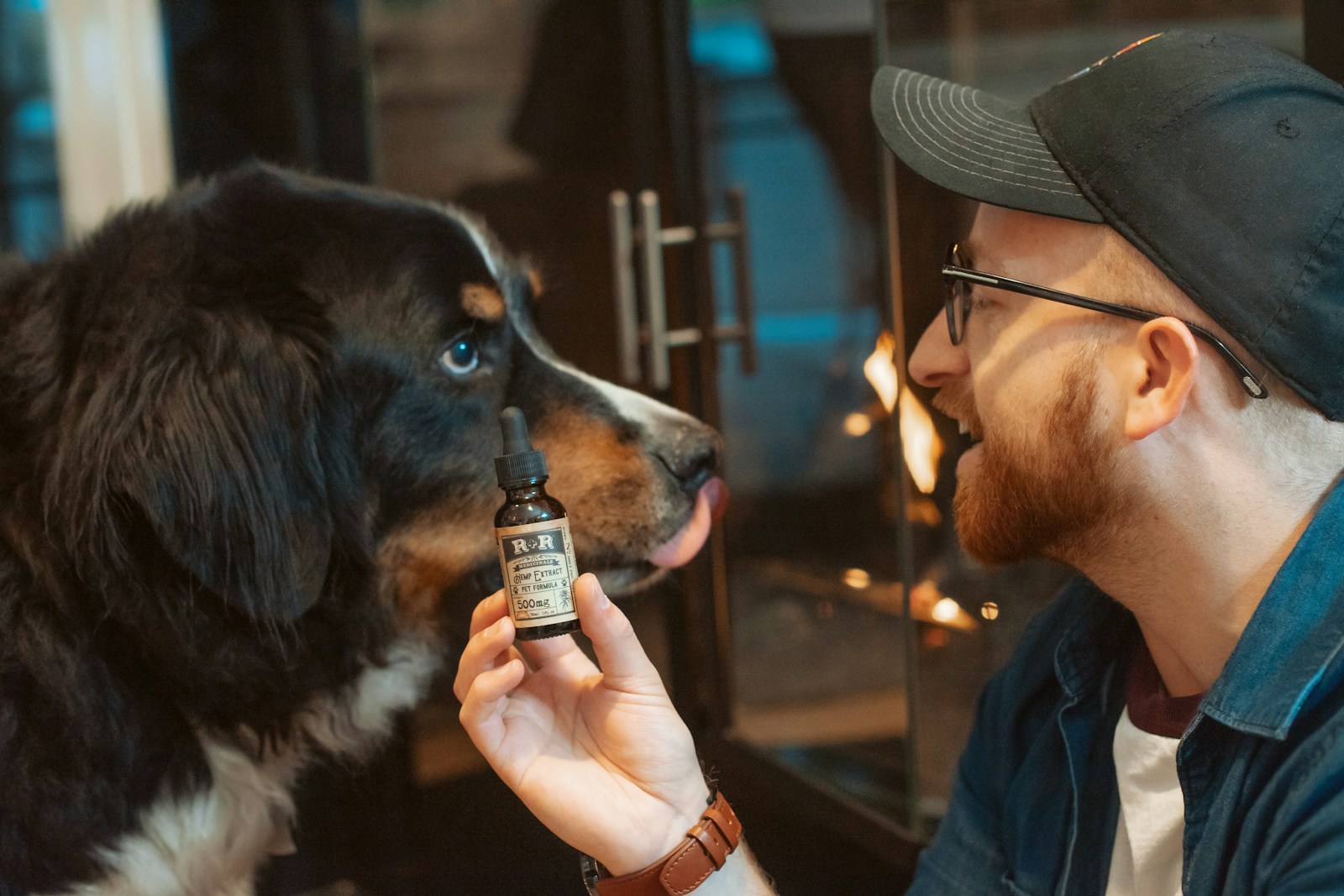Ensuring the well-being of your canine companion involves more than just providing love and attention; it also means defending them against external threats like fleas and ticks. These tiny parasites not only make your dog uncomfortable but can pose serious health risks if left untreated. In this comprehensive guide, we’ll delve into the world of flea and tick control, providing you with essential information to keep your furry friend healthy and happy.
Understanding Fleas and Ticks
Fleas and ticks, though small, can have a significant impact on your dog’s health. Understanding their biology is crucial to implementing effective control measures. Fleas, with their powerful jumping abilities, can quickly infest your dog and your home. Ticks, on the other hand, attach themselves to your dog, feeding on blood and potentially transmitting diseases. Knowing the life cycles and habits of these parasites is the first step in preventing and controlling infestations.
Signs of Infestation
Recognizing the signs of a flea or tick infestation is crucial for prompt intervention. If your dog is constantly scratching, biting, or excessively grooming themselves, it may be a sign of these pesky intruders. Redness, irritation, and the presence of small dark specks (flea dirt) on your dog’s coat are also indicators. Check for ticks especially in areas with less fur, such as the ears, between the toes, and around the tail. Early detection ensures a quicker and more effective response.
Importance of Preventive Measures
Prevention is the cornerstone of effective flea and tick control. Beyond the discomfort they cause, these parasites can transmit diseases such as Lyme disease and tapeworms. Proactive measures, including regular checks, grooming, and the use of preventive products, are essential for safeguarding your dog’s health. Prevention not only protects your pet but also prevents infestations from spreading to your home and potentially affecting human members of your household.
Flea and Tick Control Products
A variety of products are available for effective flea and tick control, each with its own advantages and considerations. Topical treatments, such as spot-on solutions, are applied directly to your dog’s skin. Oral medications provide systemic protection, reaching fleas and ticks through your dog’s bloodstream. Collars release active ingredients over time, creating a protective barrier. Understanding the different products and their application methods allows you to choose the one that best suits your dog’s needs and lifestyle.
Application Techniques
Choosing the right product is only half the battle; proper application is equally important. Follow the manufacturer’s instructions carefully, ensuring that you apply the product to the right areas and in the correct amount. For spot-on treatments, part your dog’s fur to expose the skin and apply the solution directly. Collars should fit snugly but not too tight, and oral medications must be administered according to weight. Consistency and accuracy in application enhance the product’s efficacy while minimizing any potential side effects.
Natural Remedies
If you prefer a more natural approach to flea and tick control, several alternative remedies can complement or serve as alternatives to conventional products. Essential oils, such as lavender and peppermint, are known for their repellent properties. Diatomaceous earth, a natural powder, can be sprinkled in your home and on your dog to dehydrate and kill fleas. While natural remedies can be effective, it’s essential to research and use them with caution, as some may be harmful to pets or less proven in their efficacy.
Regular Checking and Grooming
Routine checks and grooming play a vital role in early detection and prevention. Develop a habit of thoroughly checking your dog’s coat, especially after outdoor activities. Use a fine-toothed comb to catch any fleas or ticks attempting to hide. Regular grooming not only helps you spot potential problems but also keeps your dog’s coat healthy, making it more challenging for parasites to thrive.
Environmental Management
Fleas and ticks don’t just target your dog; they can also infest your home and yard. Vacuuming regularly, especially in areas where your dog frequents, helps eliminate fleas and their eggs. Wash your dog’s bedding, toys, and other belongings frequently. Consider using pet-safe insecticides or natural alternatives in your home and yard to create an environment less hospitable to these parasites.
Health Risks of Flea and Tick Infestations
Unchecked infestations can lead to severe health issues for your dog. Fleas can cause anemia, transmit tapeworms, and exacerbate skin conditions. Ticks, in addition to transmitting Lyme disease, can cause paralysis and allergic reactions. Recognizing the potential health risks underscores the importance of proactive control measures. Regular veterinary check-ups can help catch any issues early and provide guidance on the most suitable preventive measures for your dog’s individual needs.
Strategies For Flea and Tick Control
Natural Remedies for Flea and Tick Control
Natural remedies can be a gentle yet effective way to repel fleas and ticks from your dog. Here are some natural solutions:
- Apple Cider Vinegar: Creating a more acidic environment on your dog’s skin can make it less attractive to fleas. A final rinse with a mixture of apple cider vinegar and water after bathing can help with this3.
- Essential Oils: Certain essential oils, when diluted properly with a carrier oil like grape seed oil, can repel fleas. Some safe options include lavender, lemon, and cedar. However, it’s important to avoid oils like wintergreen, pennyroyal, or clove, which can be dangerous for dogs.
- Diatomaceous Earth: Sprinkling food-grade diatomaceous earth around your home and on your dog’s bedding can help kill fleas by dehydrating them.
Chemical Treatments for Flea and Tick Control
For those facing a severe infestation or looking for a more aggressive approach, chemical treatments may be necessary:
- Flea Shampoos: These products can kill fleas on contact and are useful during an active flea attack.
- Topical Insecticides: Products like Advantage contain active ingredients such as imidacloprid, which attacks the flea’s nervous system.
- Oral Medications: Oral flea treatments like Nitenpyram can start killing fleas within 30 minutes and are safe for most pets.
Prevention Tips for Flea and Tick Control
Prevention is always better than cure. Here are some tips to prevent flea and tick infestations:
- Regular Grooming: Keeping your dog’s coat clean with regular baths and using a flea comb can help prevent fleas and ticks.
- Clean Environment: Vacuuming regularly and washing your dog’s bedding in hot water can reduce the risk of infestation.
- Preventative Medications: Consult with your vet about preventative treatments like flea collars, topical solutions, or oral medications that can protect your dog year-round.
FAQs about Flea and Tick Control
Addressing common questions about flea and tick control provides comprehensive guidance for pet owners.
How often should I apply flea and tick control products?
The frequency depends on the product you’re using. Follow the manufacturer’s recommendations, typically ranging from monthly to every three months.
Can I use multiple flea and tick control products simultaneously?
Combining different products may lead to overmedication and potential harm. Consult your vet before using multiple products at the same time.
Are natural remedies as effective as conventional products?
While some natural remedies can be effective, their efficacy varies. It’s
essential to research thoroughly and consult with your vet before using them.
Can my dog get fleas or ticks in the winter?
Yes, fleas and ticks can survive in warmer areas, such as your home. Regular preventive measures are essential throughout the year.
How can I protect my home from fleas and ticks?
Regular vacuuming, washing, and using pet-safe insecticides or natural alternatives in your home and yard help create an inhospitable environment for fleas and ticks.
What should I do if my dog has a severe infestation despite preventive measures?
Consult your vet immediately. They can recommend specific treatments and guide you on eliminating fleas and ticks from your home.
Conclusion
Defending your dog against fleas and ticks is not just about comfort; it’s about protecting their overall health and well-being. By understanding the risks, adopting preventive measures, and choosing the right products and techniques, you can ensure a happy, healthy, and pest-free life for your furry friend.






